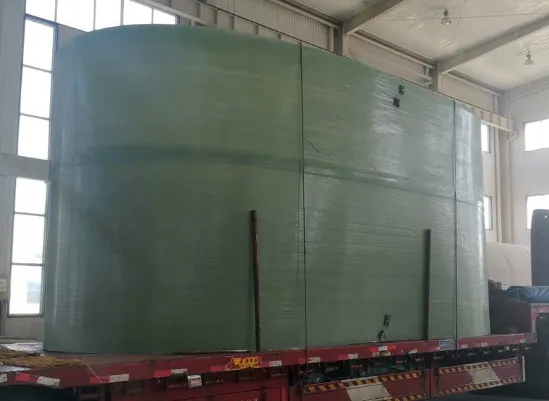
-
 Afrikaans
Afrikaans -
 Albanian
Albanian -
 Amharic
Amharic -
 Arabic
Arabic -
 Armenian
Armenian -
 Azerbaijani
Azerbaijani -
 Basque
Basque -
 Belarusian
Belarusian -
 Bengali
Bengali -
 Bosnian
Bosnian -
 Bulgarian
Bulgarian -
 Catalan
Catalan -
 Cebuano
Cebuano -
 China
China -
 China (Taiwan)
China (Taiwan) -
 Corsican
Corsican -
 Croatian
Croatian -
 Czech
Czech -
 Danish
Danish -
 Dutch
Dutch -
 English
English -
 Esperanto
Esperanto -
 Estonian
Estonian -
 Finnish
Finnish -
 French
French -
 Frisian
Frisian -
 Galician
Galician -
 Georgian
Georgian -
 German
German -
 Greek
Greek -
 Gujarati
Gujarati -
 Haitian Creole
Haitian Creole -
 hausa
hausa -
 hawaiian
hawaiian -
 Hebrew
Hebrew -
 Hindi
Hindi -
 Miao
Miao -
 Hungarian
Hungarian -
 Icelandic
Icelandic -
 igbo
igbo -
 Indonesian
Indonesian -
 irish
irish -
 Italian
Italian -
 Japanese
Japanese -
 Javanese
Javanese -
 Kannada
Kannada -
 kazakh
kazakh -
 Khmer
Khmer -
 Rwandese
Rwandese -
 Korean
Korean -
 Kurdish
Kurdish -
 Kyrgyz
Kyrgyz -
 Lao
Lao -
 Latin
Latin -
 Latvian
Latvian -
 Lithuanian
Lithuanian -
 Luxembourgish
Luxembourgish -
 Macedonian
Macedonian -
 Malgashi
Malgashi -
 Malay
Malay -
 Malayalam
Malayalam -
 Maltese
Maltese -
 Maori
Maori -
 Marathi
Marathi -
 Mongolian
Mongolian -
 Myanmar
Myanmar -
 Nepali
Nepali -
 Norwegian
Norwegian -
 Norwegian
Norwegian -
 Occitan
Occitan -
 Pashto
Pashto -
 Persian
Persian -
 Polish
Polish -
 Portuguese
Portuguese -
 Punjabi
Punjabi -
 Romanian
Romanian -
 Russian
Russian -
 Samoan
Samoan -
 Scottish Gaelic
Scottish Gaelic -
 Serbian
Serbian -
 Sesotho
Sesotho -
 Shona
Shona -
 Sindhi
Sindhi -
 Sinhala
Sinhala -
 Slovak
Slovak -
 Slovenian
Slovenian -
 Somali
Somali -
 Spanish
Spanish -
 Sundanese
Sundanese -
 Swahili
Swahili -
 Swedish
Swedish -
 Tagalog
Tagalog -
 Tajik
Tajik -
 Tamil
Tamil -
 Tatar
Tatar -
 Telugu
Telugu -
 Thai
Thai -
 Turkish
Turkish -
 Turkmen
Turkmen -
 Ukrainian
Ukrainian -
 Urdu
Urdu -
 Uighur
Uighur -
 Uzbek
Uzbek -
 Vietnamese
Vietnamese -
 Welsh
Welsh -
 Bantu
Bantu -
 Yiddish
Yiddish -
 Yoruba
Yoruba -
 Zulu
Zulu
Feb . 08, 2025 04:13
Back to list
fiberglass grid
Fiberglass grid systems have surged forward in recent years, driven by advancements in material science and growing demands across various industries. These systems are not merely alternatives to traditional metal grids; they offer distinct advantages in strength, durability, and adaptability. As an industry expert with years of experience working with construction materials, I've seen firsthand how fiberglass grids transform infrastructure projects. Their unique qualities not only offer substantial technical benefits but also drive cost efficiencies, proving themselves to be a wise investment in both the short and long term.
In terms of trustworthiness, it’s significant that fiberglass grids are consistently underpinned by rigorous testing and quality assurance standards. Leading manufacturers adhere to international quality norms, ensuring these grids meet stringent mechanical and safety standards. This is crucial for establishing trust with developers, architects, and end-users who need assurance of performance over time. Moreover, the environmental profile of fiberglass grid materials aligns with the increasing emphasis on sustainability, as they contribute to longer-lasting structures with reduced environmental impact due to their lower maintenance and higher durability. Drawing from extensive field experience, I've observed that industries employing fiberglass grids also report an uptick in renewable energy projects, specifically in areas requiring materials that combine lightweight characteristics with stability, such as wind turbine bases and solar panel supports. This emerging application underscores the forward-thinking nature of adopting fiberglass grids, as renewable projects demand materials that stand up to harsh climatic conditions without compromising on structural performance. In conclusion, the adoption of fiberglass grid systems is a clear reflection of industry shifts towards materials that provide enhanced performance, cost-efficiency, and sustainability. With deep knowledge and experience in the field, it's evident how these assets transform traditional approaches to infrastructure development. Their customization potential, low-maintenance profiles, and environmental benefits are unparalleled, positioning fiberglass grids as a highly credible and authoritative choice for modern construction challenges. Whether at sea, in the heart of a bustling city, or in a remote wind farm, the impact of fiberglass grids continues to expand, marking them as a foundational component in future-proof infrastructure solutions.


In terms of trustworthiness, it’s significant that fiberglass grids are consistently underpinned by rigorous testing and quality assurance standards. Leading manufacturers adhere to international quality norms, ensuring these grids meet stringent mechanical and safety standards. This is crucial for establishing trust with developers, architects, and end-users who need assurance of performance over time. Moreover, the environmental profile of fiberglass grid materials aligns with the increasing emphasis on sustainability, as they contribute to longer-lasting structures with reduced environmental impact due to their lower maintenance and higher durability. Drawing from extensive field experience, I've observed that industries employing fiberglass grids also report an uptick in renewable energy projects, specifically in areas requiring materials that combine lightweight characteristics with stability, such as wind turbine bases and solar panel supports. This emerging application underscores the forward-thinking nature of adopting fiberglass grids, as renewable projects demand materials that stand up to harsh climatic conditions without compromising on structural performance. In conclusion, the adoption of fiberglass grid systems is a clear reflection of industry shifts towards materials that provide enhanced performance, cost-efficiency, and sustainability. With deep knowledge and experience in the field, it's evident how these assets transform traditional approaches to infrastructure development. Their customization potential, low-maintenance profiles, and environmental benefits are unparalleled, positioning fiberglass grids as a highly credible and authoritative choice for modern construction challenges. Whether at sea, in the heart of a bustling city, or in a remote wind farm, the impact of fiberglass grids continues to expand, marking them as a foundational component in future-proof infrastructure solutions.
Next:
Related Products









